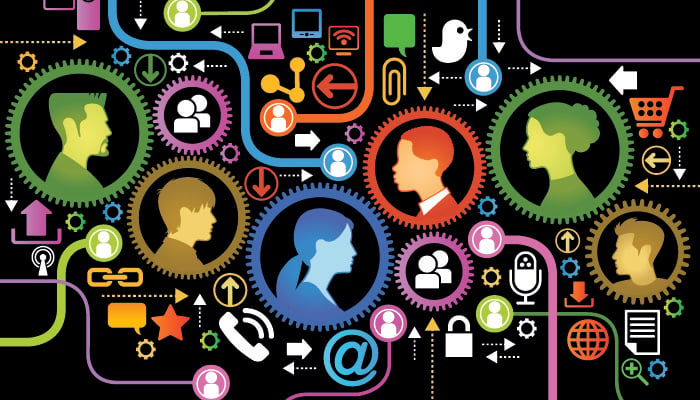Staying Connected: Meeting The Needs Of Modern Field-Service Customers Through Technology
Aug 31, 2018 • Features • Augmented Reality • connectivity • Future of FIeld Service • digitalisation • field service • Internet of Things • IoT • Samir Gulati • Service Management • Smart Home • Customer Satisfaction and Expectations • Managing the Mobile Workforce
Samir Gulati outlines four key technologies that are forming the bedrock for twenty-first century field service...
Twenty-first-century technological advancement has transformed how businesses everywhere communicate and interact with their customers.
Gone are the days of the occasional customer service call. Mobile technology has forever changed how people connect with product and service providers.
Field-service businesses that have yet to embrace digital customer engagement methods and tools must work quickly to do so. Modern consumers don’t like losing whole days waiting for calls from service personnel. They expect field service companies to use the latest technology to streamline the customer experience, create visibility into appointments and reduce hassle.
But which technological innovations should field service providers focus on? Here are some of the key technological tools gaining steam among the customers of the connected age.
Customer portals
Because of the pervasiveness of mobile technology, customer portals are everywhere.
Although the quality of these web-based assets varies from business to business, there are a couple essential components that creators of customer portals will always include:
- Information-rich, personalized dashboards allow users to view critical service data.
- Payment and account management give customers transparency into their past service requests and a place to pay for services rendered.
With tools like these, customers can serve themselves, which 67 percent prefer over speaking directly with a customer service representative. That said, direct communication tools such as instant messaging are still valuable, especially if they connect a customer with their personal technician or central dispatch.
These features not only meet the high standards of connected customers. They also simplify field service operations and reduce the likelihood of miscommunication between the provider and the customer.
Internet of things:
The internet of things is perhaps the most powerful innovation transforming business-to-consumer interaction today. At the moment, more than 11 billion IoT assets are active worldwide. By 2020, that figure is expected to jump to around 20.4 billion, a good number of which will likely be part of connected field-service operations.
In the field-service industry, asset-based deployments are common. Sensors embedded in equipment or appliances leverage internet connectivity to notify owners or even field-service providers when maintenance may be required, accelerating the repair process. Technician facing IoT workflows are also common and use geolocation to track service teams and route them to customers in need.
Smart home technology:
Even though web-enabled smart home technologies have received a lot of buzz in recent years, relatively few homeowners have adopted such solutions: In 2017, only 10 percent of families across the had any connected home solutions.
But smart home adoption isn’t unlikely to remain this low for long. Consumers are beginning to understand how much time and money smart home tech can save.
Field-service companies in the utility sector are catching on to the building momentum behind these innovative hardware and software solutions. Smart thermostats, for example, give customers greater visibility into—and control over—their electricity and gas usage. They also give technicians a better way to leverage data in order to provide personalised service and communicate effectively with the customer and the manufacturer.
Augmented reality:
Reality, augmented by real-time data, delivers benefits to connected customers by giving their technicians all the resources they need to perform perfect maintenance.
Field-service companies of all sizes are leveraging these tools to revolutionise on-site operations. Many are equipping technicians with augmented reality headsets that allow them to view updated product operating instructions or best practices while performing maintenance or repairs. Others are using these tools in training exercises so new technicians can ramp up quickly.
Summary: Embracing Innovation:
Field-service providers without these technologies may still be tempted to hold off on adoption. Perhaps they find these solutions too expensive or too complicated to deploy at the moment. It’s up to the decision-makers at these companies to decide what’s viable and what isn’t.
But these leaders should not underestimate the power of creating a bold new strategy for technology. It can lay the groundwork for excellent service effective operations in the age of the connected customer. As technology moves forward, so do consumers.
Field-service enterprises would be wise to recognize this reality and put into place up-to-date hardware and software that meets the needs of those driving the modern marketplace.
Samir Gulati, is Chief Marketing Officer, ServicePower
Be social and share...




















 Field Service News is published by 1927 Media Ltd, an independent publisher whose sole focus is on the field service sector. As such our entire resources are focused on helping drive the field service sector forwards and aiming to best serve our industry through honest, incisive and innovative media coverage of the global field service sector.
Field Service News is published by 1927 Media Ltd, an independent publisher whose sole focus is on the field service sector. As such our entire resources are focused on helping drive the field service sector forwards and aiming to best serve our industry through honest, incisive and innovative media coverage of the global field service sector.
Leave a Reply